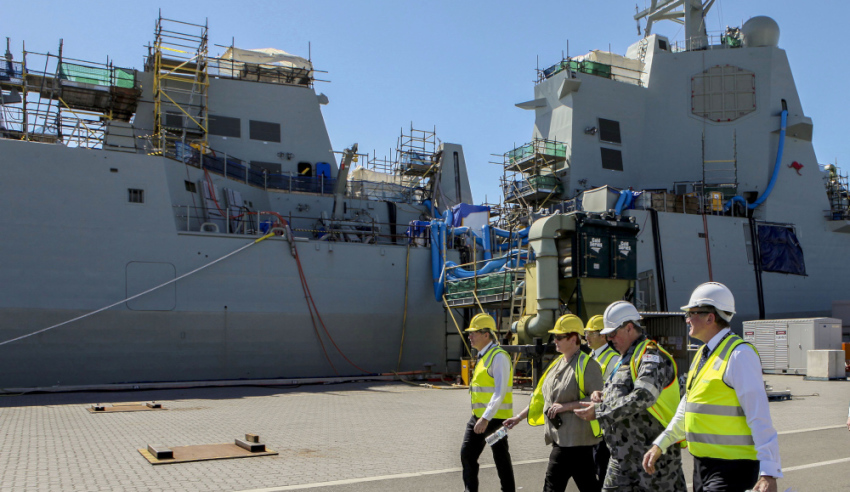The Australian Maritime College in partnership with Navantia Australia and the Royal Institution of Naval Architects Australian Division (RINA) have launched a range of support programs to enhance the capacity of Australia’s future naval shipbuilders.
To continue reading the rest of this article, please log in.
Create free account to get unlimited news articles and more!
Four Australian Maritime College (AMC) students are getting invaluable experience as interns at Navantia Australia during their summer break. The third year maritime engineering students are based in the Sydney and Melbourne offices of Navantia for 12 weeks.
Hadiqa Khan and Zachary Sutherland are working with teams embedded at the Garden Island Naval Precinct in Sydney where they will be exposed to work in the ACPC LHD (landing helicopter dock) sustainment program and the DDG (guided missile destroyer) Transition to Service Program.
As part of the internship Khan will be mentored by Navantia’s field engineer LHD Tom Ross and Sutherland by configuration engineer DDG Andrew Mann.
In Melbourne, Maitland Osborn and Johnson Joseph are working in Navantia’s Naval Design and Engineering Centre, where they will be mentored by lead engineer general design Matthew Harman and lead engineer equipment and outfit Simon Kelly, respectively.
Navantia communications and marketing manager Cindy Slaven said the students were the first group to receive internships with the firm. AMC industry coordinator for maritime engineering James Erbacher said it was great that Navantia is able to take so many students.
"It offers them a chance to put all their academic and practical learning into practice in a workplace environment," Erbacher said.
Further supporting the offering for students, all maritime engineering graduates of the AMC have had their path to chartered status smoothed by a new agreement with the RINA Australian Division.
AMC principal Michael van Balen, AO, and RINA president Dr Martin Renilson signed the agreement at the Newnham campus.
“This sets our students off on the start of their career for certification as maritime engineers,” van Balen said.
Dr Renilson said RINA was the international learned society for maritime engineers.
“This arrangement with AMC, which is the primary principal place for teaching maritime engineering in Australia, is a good move forward. It makes it easier for AMC maritime engineering students to join RINA as student members and thus makes their path to corporate member and subsequent chartered status a lot easier,” he said.
The agreement comes at a time of growing demand for naval architecture and maritime engineering graduates thanks to the $90 billion National Naval Shipbuilding Enterprise.
Under the agreement, all AMC bachelor of engineering students can become student members of RINA free of charge.
“Graduation from AMC as a bachelor of engineering in any of the three specialties has been accepted as meeting the educational requirements for corporate membership of RINA,” Dr Renilson said.
He said it may take up to five years of experience to achieve member grade and be eligible to be a Chartered Engineer.
“A person only becomes a fully fledged maritime engineer when they achieve MRINA CEng or the equivalent EA membership grade,” Dr Renilson said.
“It is only when a person is at chartered status that they can truly work independently and call themselves an engineer.”
He said that the requirement for a person to have chartered engineer status was increasing generally and especially with large companies. Membership of RINA also provides members with up to date technical information and general news related to the maritime engineering industry.
“It also monitors continued professional development, which is a requirement to maintain chartered status,” he said.
Navantia Australia is a subsidiary of the Spanish parent company Navantia, which dates back to 1730.
Navantia Australia has a partnership with the Royal Australian Navy that began with contracts to design the Hobart Class DDGs, and continued with the design and co-manufacture of the Canberra Class amphibious assault ships (LHD), the construction of 12 LHD landing craft, and a recent contract to build and maintain two replenishment ships.

 Login
Login







